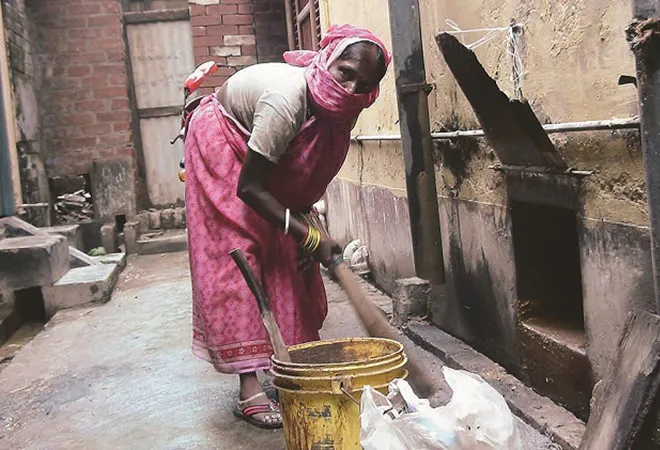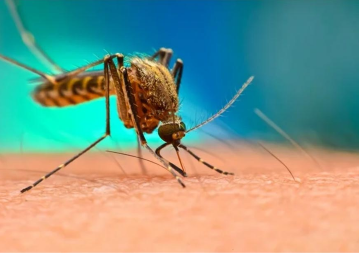
Days after the Bombay High Court expressed its concern over growing deaths of manual scavengers in Maharashtra while hearing a PIL on the issue, India’s commercial capital was once again a mute witness to the death of three sanitation workers in a housing society’s septic tank. Sadly, this was not a one-off tragedy. Nearly seven years after the legislation of the- ‘Prohibition of Employment as Manual Scavengers and Their Rehabilitation Act (Manual Scavengers Act) 2013,’ deaths of sanitation workers due to asphyxiation inside sewers and septic tanks continue to be reported with an unfailing regularity from across India.
The Union Ministry of Social Justice and Empowerment (MSJE), in a reply to a question by NCP’s Rajya Sabha MP Vandana Chavan, revealed that 282 sanitation workers have died while cleaning sewers and septic tanks in the country between 2016 and November 2019. The highest number of deaths, 40 was recorded in Tamil Nadu followed by Haryana, which recorded 31 deaths in manholes. Delhi and Gujarat recorded 30 deaths each followed by Maharashtra and Uttar Pradesh, each recording 27 deaths. While the year 2016 accounted for 50 deaths, 83 sanitation workers died due to suffocation in septic tanks and sewers in 2017 and 66 deaths were recorded in 2018. Till November 2019, the death count reported from across the country stood at 83. These figures, the ministry maintained, were based on the number of FIRs filed by the police in the respective states.
However, these figures could just be the tip of the iceberg. According to the Safai Karmachari Andolan (SKA), an organisation working to eradicate manual scavenging, the actual number of deaths could be much “higher than reported.” Since 2000, when the SKA started recording nationwide figures, it has pegged the death count at 1,760.
Similar doubts about the reliability of the official records had also been raised in the past, when the National Commission for Safai Karamcharis (NCSK), a statutory body set up by an Act of parliament, released its data for all-India deaths in the first eight months of 2017. The NCSK data accounted for 123 deaths during January-August 2017. Based on newspaper reports and voluntary disclosures by a few state governments, this was first ever attempt made to account for such deaths. However, the worrying omissions in this data came to light when the SKA released its own data for the same period, accounting for 429 deaths in the National Capital Region (NCR) alone.
The wide difference between the official and NGO figures suggest that laws framed for the safety and welfare of manual scavengers are not being enforced with due sincerity and vigour. For example, the employment of manual scavengers was first banned in 1993 by the Employment of Manual Scavengers and Construction of Dry Latrines (Prohibition) Act (MSCDL Act). It made the non-compliance of any of its provisions punishable as cognisable offence. However, not a single annual report of the National Crime Records Bureau (NCRB) has recorded any crime under the MSCDL Act till today.
The MSCDL Act defines manual scavenger as “a person engaged in or employed for manually carrying human excreta.” Manual scavenging may not be prevalent in the same form today. It has only worsened. Sanitation workers have to now risk their lives by physically entering the septic tanks and sewers that have not been deludged for years together to clean them manually – mostly without even the basic safety gear.
Sadly, such laxity is also evident in the implementation of the Manual Scavengers Act, which clearly states that no person, local authority or any agency shall engage or employ, either directly or indirectly, any person for hazardous cleaning of a sewer or a septic tank. Section 9 of the said Act explicitly makes even the first instance of contravention of this statute punishable with imprisonment up to two years or fine up to INR two lakh or both. Despite such stringent provisions, not a single FIR was filed under the provisions of this Act in 2014. Two cases under the law were reported from Karnataka in the NCRB report of 2015, where only one went for trial. Karnataka has maintained its solo lead in its compliance with the law, by filing 55 FIRs as announced by the MSJE in the Lok Sabha in March 2018.
Such lack of seriousness regarding one of the most disturbing realities of the country is also highlighted in the government’s own survey of manual scavengers. For example, nearly 600,000 manual scavengers were identified in a survey conducted in 1992. This number shot up to nearly 800,000 in the revised survey figures announced by the MSJE in 2002-03. The numbers suddenly dropped to just 13,639 in 2013. Therefore, it sounds implausible that, despite the many positive steps taken under the Swachh Bharat Mission, this figure more than tripled to 42,303, according to a national survey carried out in 2018 covering 170 districts and 18 states. Karnataka stands sixth with 1,754 manual scavengers after Uttar Pradesh (19,712), Maharashtra (7,378), Uttarakhand (6,033) Rajasthan (2,590) and Andhra Pradesh (1,982). But even this figure seems highly inaccurate, as the 2018 survey, for reasons best known to the MSJE, was carried out only in areas where “there are reasons to believe the existence of manual scavengers.”
Given such confusion over fixing the number of people engaged in this work, the second important component of the Manual Scavengers Act, i.e. rehabilitation of manual scavengers through various skilling initiatives, has suffered the most. Of the 42,203 manual scavengers identified from across India in 2018, skill development training under the Self Employment Scheme for Liberation and Rehabilitation of Scavengers (SRMS) – which includes a monthly stipend of INR 3,000 – was imparted to only 1,682 in 2018-19 and 978 in 2019. Out of the total allocation of INR 110 crore, only INR 85.76 crore was utilised for skilling programmes under SRMS in 2018-19. In the current financial year, up to December 2019, against the estimated expenditure of INR 7.68 crore, the utilisation of funds has been to the tune of only INR 2.03 crore. The SRMS also offers a credit-linked back-ended capital subsidy of INR 325,000 in addition to a concessional loan for undertaking self-employment ventures to each identified manual scavengers and their dependents. However, only 252 manual scavengers have received this benefit.
In addition, each manual scavenger was to be awarded a one-time cash assistance of INR 40,000 as per the recommendations of the 31-member panel headed by Rama Devi, Member of Parliament. But of the 42,203 who were identified, only 27,268 have been given such cash assistance.
In a country where even an unintentional insult or intimidation with intent to humiliate a member of a Scheduled Caste or a Scheduled Tribe can invite imprisonment for a term of up to five years and a fine under the stringent Prevention of Atrocities Act, it is ironic that such systemic murders are brushed aside as deaths due to acts of negligence. Clearly, while cities after cities are pushing the envelope to emerge as “cleanest cities” in the ongoing ‘Swachh Sarvekshan,’ the unending deaths of sanitation workers still forced to carry out acts of manual scavenging and the lackadaisical approach towards their rehabilitation, are a blot on the entire Swachh Bharat Mission, obliterating much of its loud claims of success.
The views expressed above belong to the author(s). ORF research and analyses now available on Telegram! Click here to access our curated content — blogs, longforms and interviews.




 PREV
PREV


